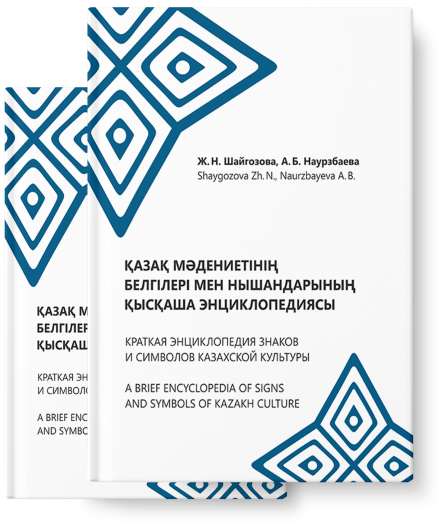
A short encyclopedia of
Signs and symbols of
Kazakh culture

The ring as a closed circle symbolises integrity and unity. This is confirmed by the name of the ring among the Turks – zhuzik (consisting of the noun zhuz and the ending ik). The etymology of the words “zhüzіk” and “zhüz” by the linguist E.N. Zhanpeisov [5], based on the analysis of a number of materials, refers to the designation of the highest level of the clan association.
In Turkic culture there were different types and forms of women’s and men’s rings. Wearing women’s rings was obligatory as they were considered strong amulets. Food prepared without silver rings was considered “impure.” Ethnographers emphasise that rings indicated a woman’s membership in a particular tribal group, indicated the wearer’s age, and represented her property status.
The “qūs tūmsyk” (bird’s beak) and the “qūdaği zhüzik” (matchmaker’s ring) are symbolically occupied in the diverse collection of Kazakh rings. The former belongs to the category of girls’ jewellery. According to ethnographic data, wearing of this ring by a girl meant that she was free (not engaged). It is known that the bird is the oldest symbol of freedom in Turkic culture. It is also possible that the design of this ring goes back to a picture symbol of the female bird Umay or Humayun. Researcher T.A. Kishkashbaev believes that “rings with the image of a bird’s beak reflect ideas of prosperity, as the bird symbolises ideas of freedom and happiness in Kazakh culture and embodies forces of good. When such a ring was given to a zhigit leaving for a campaign, everyone understood its meaning: “a safe return home” [6, p. 121].
The type of girl’s ring also determined the rules for wearing it: one type could only be worn on the middle finger (a girl who had lost her parents), another on the ring finger. Wearing a ring on the middle finger was strictly forbidden to women, otherwise, it was believed, a relative would die.
The ring, popularly called the “matchmaker’s ring,” is a solid piece worn on two fingers. It was usually given by the bride’s parents to the future mother-in-law and symbolised the union of two beginnings, two families and two families. The Khakas people also had massive matchmaker rings, which they call “chustuk”.
In male subculture, rings served as both a pragmatic and status marker. Archers, for example, wore them on their thumbs to avoid rubbing their hands on the string when drawing an arrow. Among the Kazakhs, “the teardrop shape marked the ruling elite, the sacred rank – leather – wore rings and rings of round shape, and oval, pear-shaped, and square rings were attached to the fingers of non-commissioned officers and batyrs” [6, p.118]. Among the Turkmen, the rings were worn by men associated with certain (space-related sacred) activities – barbers, butchers, and corpse washers.

